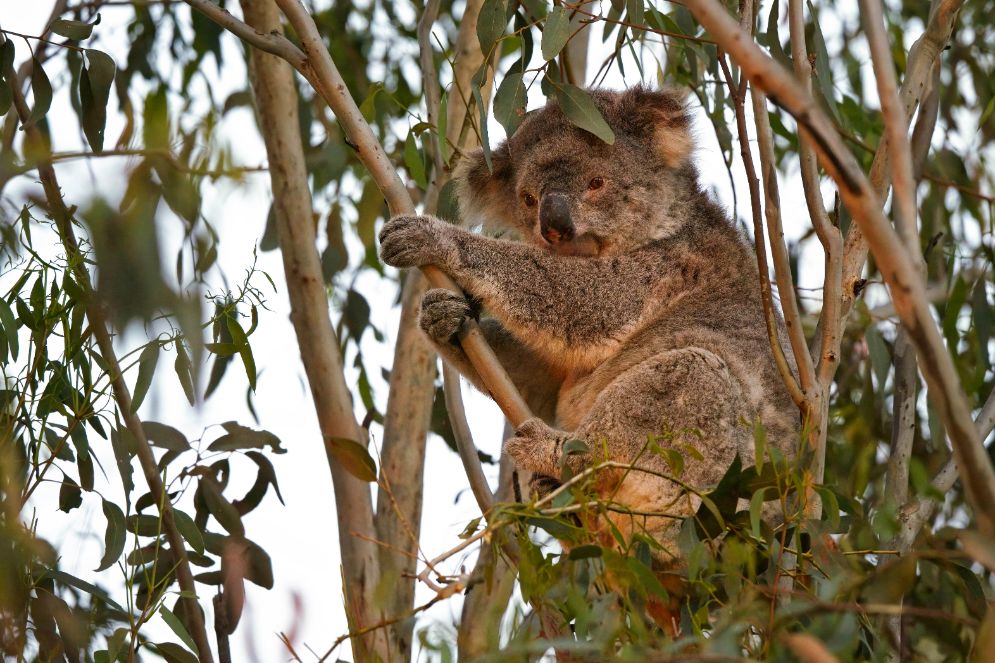Our Armidale campus is part of an important corridor for koalas in one of the few remaining strongholds for this nationally threatened species. And now UNE has an updated Koala Plan of Management (KPoM) to boost its conservation efforts and inform future development.
Koalas regularly spotted on campus belong to a significant population centred on Armidale, Black Mountain and Uralla. Elsewhere in eastern Australia, the species is declining due to habitat loss, bushfire, disease, climate change and other threats.
UNE Environmental Sustainability Manager Suzannah Mitchell said the new KPoM has been prepared by alumnus and ecologist David Carr. It reflects changes to the animal's listing and legislation, the 2018-19 drought, 2019-20 bushfires and the tornado that swept through the Armidale campus in October 2021. The plan is now a key component of UNE's Campus Master Plan.
"Among the first steps in implementing the KPoM is the creation of a dedicated koala committee and the modelling of koala corridors," Suzannah said. "We are keen to better coordinate koala research and enhance our prospects for securing grant funding, especially for koala tracking and monitoring.
It's vital that we establish how koalas use their home ranges on and around campus.
"It's vital that we establish how koalas use their home ranges on and around campus. While most koalas have a range of 35-50 hectares, some are known to live entirely within 1-4 square kilometres. It therefore continues to be important for staff to register koala sightings on campus, through the 'I Spy Koala' smartphone app or by sending an email to [email protected], to help us identify and count individuals."
The app is a NSW Government initiative, and emails to [email protected] contribute to a UNE-specific koala sighting project - so it's important to do both.
Important local role
As well as protecting core koala habitat and corridors, UNE is committed to growing the number of koala habitat trees and improving habitat connectivity through revegetation under the KPoM. "Education remains an important element, too, and we will look to share more information about koalas and install more koala signs on campus," Suzannah said.
Professor of wildlife ecology and conservation biology Karl Vernes said UNE has an important role to play locally in protecting koalas.

"We are one of the few Australian universities with koalas on its campus, and this is because we have good koala food trees and habitat," he said. "Koalas are still doing okay in this cooler climate, so now's the time to be paying them more attention, especially given the latest climate predictions.
"We know that climate change and bushfires impact koala populations, but we can all play our part in looking after this iconic marsupial. Koalas are threatened primarily because of what we have done to the landscape - the clearing that has made it more dangerous for koalas and removed connectivity between patches of forest.
We can all play our part in looking after this iconic marsupial.
"A plan of management that talks about corridors and revegetation on a large rural campus like ours is very important. We can all play our part."
The KPoM sets out the need to:
- Identify koala vehicle strike hotspots and mitigate risks;
- Incorporate koala-friendly road crossings and upgrade road signage;
- Remove any non-koala-friendly fencing to allow animals free passage;
- Encourage koala-specific research; and
- Collaborate with Armidale Regional Council and other organisations to chart regional koala trends.
You can view the KPoM on the Landscape and Biodiversity website






